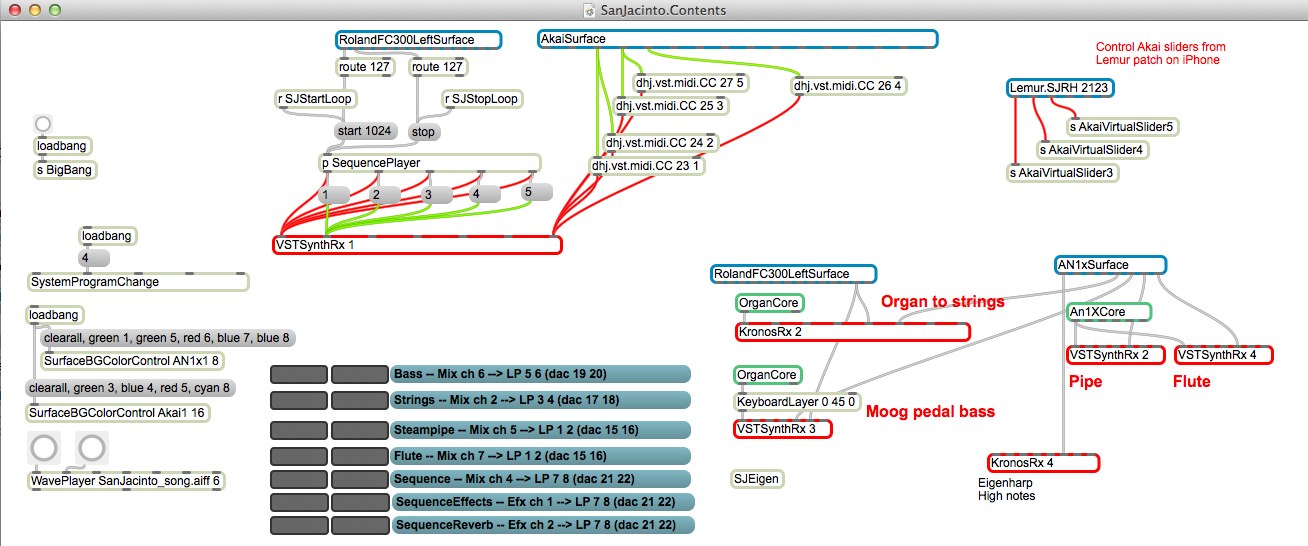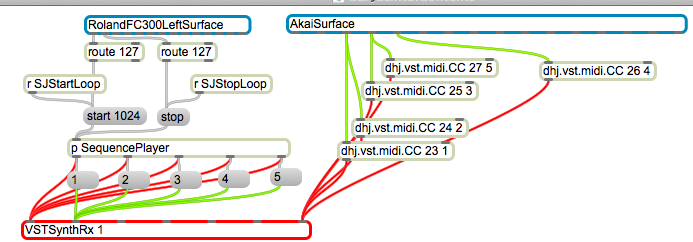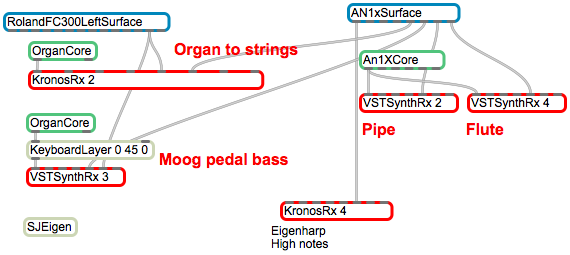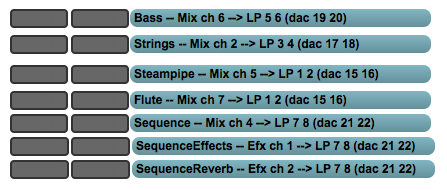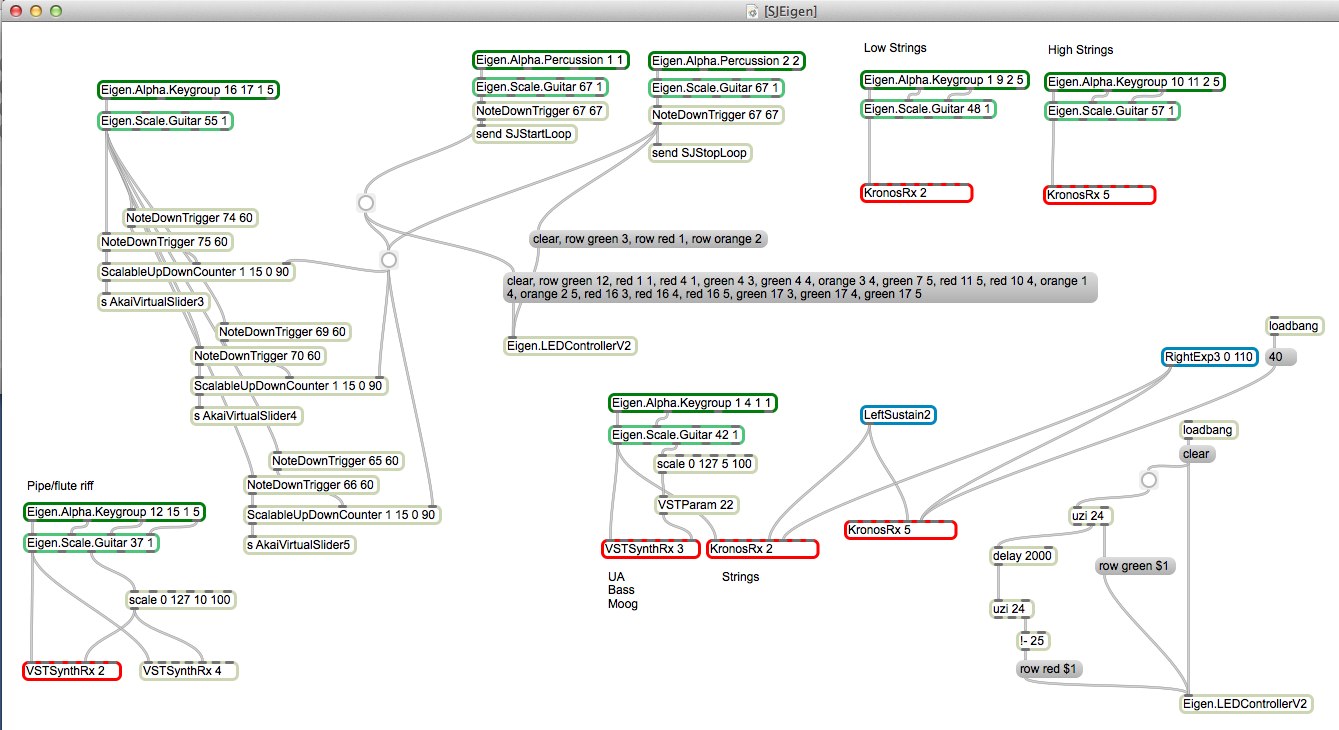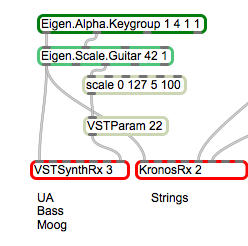Example Max setup for San Jacinto
This is the main patcher that controls how MIDI and audio are configured for San Jacinto. Images that are too large to be viewed here can be clicked to see them at their full size.
Following are explanations of some of the sections of this patcher. The first few images show how everything is done when the Eigenharp is not being used.
This section controls the MIDI loops that are playing the separate parts of the sequence throughout the song. One of the footpedals is used to start or stop the sequence. Sliders on the Akai are used to control the volume of the individual sequences.
The Lemur app running on my iPhone can also be used to control the volume of the individual sequences so that I don’t have to be behind my keyboards the whole time.
The hammond organ is used as a controller to play the strings in the middle of the song. It’s also used to play the low Moog bass effect at the very end. The AN1xCore receives MIDI from keys played on the AN1x and is used to play the steampipe/flute sound that’s also at the end. The AN1xSurface receives MIDI representing knob positions on the AN1x and is used to control the volume of the sounds.
The various sounds been produced by both external keyboards and the computer based soft synths are routed to specific outputs so that FOH can balance overall volume independently of what I choose to hear in my own monitor.
Normally, I perform this entire song using my Eigenharp and keyboard control is only there as a backup in case there’s a problem with the Eigenharp. So inside the main patcher there is a reference to another patcher which is used to manage and process input from the Eigenharp to give me the same control as I would get from the keyboards, sliders and knobs.
This defines the first four keys in column 1 of the Eigenharp to play the low bass sound which is normally a combination of a Moog bass with nice filtering and some low strings. Another part of this patcher (not shown here) lets me control the volume of that bass sound by finger pressure.
Rows 12 through 15 of the Eigenharp are routed to the soft synths that produce the steampipe sound at the end. The object called Eigen.Scale.Guitar imposes guitar-style tuning to the keys so I can play the solo using the same fingering as I would use for a guitar.
